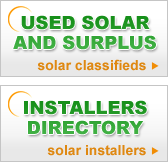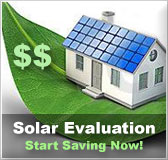 PV systems are ultra-reliable, simple to size, install and operate. The cost and complexity of your PV systems increases with the amount of energy required from it. You can power your entire house, just your lights; or anything in between. Every PV system has the same major components. This means you can start with a small system now and expand later. Your first decision is to decide on the purpose of your solar PV system. Are you going to…
Generating on-site solar electricity to sell to your local utility company is commonly called net-metering. You are in effect running your meter backwards. These systems require licensed installation contractors, and a final on-site inspection from your local utility company. First, check to see if a power grid connection with your local utility company is possible. Will your power provider connect your system to their power grid and buy any excess power you produce? If so, have the utility send you information about their PV system requirements. Make sure you get independent verification of their cost and rate charges/credits. Ask for references and check with neighbors who may have already done this. It’s pretty easy to spot those neighbors – they’ll have solar PV panels on the south side of their house, and most will be very happy to share their experiences. Most state, city, or utility offers rebates, tax credits or other incentives. Visit http://www.dsireusa.org/ to find out about financial incentives in your area.
Some people want a solar PV system only in case their utility power goes out; so they can power lights and keep food in the refrigerator from spoiling. Your normal sized refrigerator is one of the largest energy users in your house and would need a substantial solar system and battery bank to keep it powered up during a power outage. (an alternative would be to have a more efficient, smaller, less power-hungry fridge or freezer that can store essential food items during a power outage). In putting your PV system specifications together, use the same energy load calculations as with a typical PV system – just limit your energy loads to those you want to power during an outage.
This is the same as 5B – except that you will be using your solar PV system every day, rather than just when the power goes out. Since power outages occur very infrequently, and you have invested a lot of money in your solar PV system; it makes more sense to use the system every day of the year.  |











